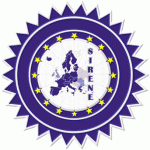 During the first phase of operation Hermes, statistical data on illegal immigration flows were gathered from the participating Member States, which revealed that it is quite problematic to gather and analyse data within our area of freedom of movement, as the Member States have no standardised method to collect and store this kind of information. This made the second – operational – phase even more important. In October, a one-week control operation on illegal immigration within Europe was organised in the participating Member States: Sweden, Italy, the United Kingdom, Greece, Luxembourg, Portugal, Finland, Bulgaria, Spain, France, Germany, Poland, the Netherlands, Hungary, Belgium, Estonia, Ireland, Cyprus, Austria, Slovakia, Slovenia and Switzerland (part of the Schengen Agreement but notably not a member of the European Union). The operation was coordinated by the Belgian Police, through National Contact Points with the assistance of the Aquapol, Tispol and Railpol platforms.
During the first phase of operation Hermes, statistical data on illegal immigration flows were gathered from the participating Member States, which revealed that it is quite problematic to gather and analyse data within our area of freedom of movement, as the Member States have no standardised method to collect and store this kind of information. This made the second – operational – phase even more important. In October, a one-week control operation on illegal immigration within Europe was organised in the participating Member States: Sweden, Italy, the United Kingdom, Greece, Luxembourg, Portugal, Finland, Bulgaria, Spain, France, Germany, Poland, the Netherlands, Hungary, Belgium, Estonia, Ireland, Cyprus, Austria, Slovakia, Slovenia and Switzerland (part of the Schengen Agreement but notably not a member of the European Union). The operation was coordinated by the Belgian Police, through National Contact Points with the assistance of the Aquapol, Tispol and Railpol platforms.
During the operational week of the Hermes project, which took place from 11th October till 17th October 2010, the 22 participating countries sent data to the Hermes office in Brussels. The Belgian police received 1,424 forms, holding information on 1,900 irregular migrants which were intercepted during this week.
Most migrants were intercepted on the train (43%), followed closely by the ones intercepted on the roads (37.3%). Another 10% of the irregular migrants were intercepted on the water ways. Some 5% of the irregular migrants had the intention to take the plane in order to reach another EU country.
Looking at the nationalities of the irregular migrants intercepted during the operation Hermes, we can see that most of them were nationals coming from Afghanistan, Iraq, Ukraine, Nigeria, Morocco, Algeria, Pakistan, India, Palestine Occupied Territory and Turkey. These 10 countries of origin account for half of the irregular migrants that were intercepted during the operation.
However, there are some other nationalities that appear into the top 10 of intercepted irregular migrants if we look at the means of transportation separately. On the water, Iranians and Somalis occur in the top 10. Most interceptions on the water ways took place in Italy (Venice). On the roads, a high number of Moldovan, Iranian, Chinese and Russian irregular migrants were in the top 10 nationalities. Most interceptions took place in Greece, Hungary, Austria and Spain. On the train, irregular Bolivians, Senegalese and Tunisians rank in the top 10. Most interceptions took place in Spain, France, Germany and Italy. On the air routes, a high number of irregular Albanians and Somalis were also intercepted during the operation. Most interceptions took place in the Greek airports, with intra-Schengen destinations.
For 54% of the intercepted irregular migrants, information was available about the point of entry into the EU. Greece and Spain (Canary Islands by small boats) were the most common points of entry into the EU. For 71% of the intercepted irregular migrants, information was available about the country of destination. The most favoured countries of destination were Spain, Italy and Germany and to a lesser extent, France and the United Kingdom.
The results of the operation will be processed and incorporated in a European map visualising the main flows of illegal immigration. As the map will only show a snapshot of the one-week control operation, the project’s continuity will be ensured by the upcoming Hungarian presidency and their operation MITRAS. The final Hermes map will complete the already existing picture on the external borders of Frontex.
Source: http://police-eu2010.be/newsletter/eu18.html
